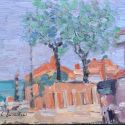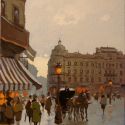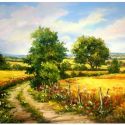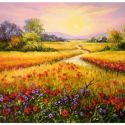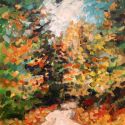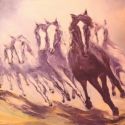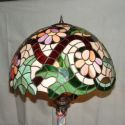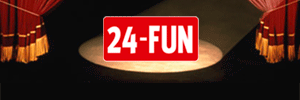Born on 04 April 1780: Edward Hicks, Pennsylvania Folk artist who died on 23 August 1849, specialized in representation of animals. Cousin of Thomas Hicks [18 Oct 1823 - 08 Oct 1890] who started out as his sign-painting apprentice from about 1835 ho 1839.
He was raised by a devout Quaker family following his mother’s death. At thirteen he was apprenticed for seven years to a coachmaker, where he developed the techniques of painting and lettering. By 1801 he had gone into business as a coach-, house- and sign-painter, later expanding his trade to include such items as milk-buckets, clockfaces and elaborate fireboards. Profoundly affected by his Quaker upbringing, he began to disapprove of painting as trifling and insubstantial, and in 1812 he became a Quaker minister. Hicks received no formal artistic training, and it was not until about 1820 that he began to paint creatively. His paintings are infused with his intense religious conviction, and he reconciled his two vocations by keeping the former "within the bounds of innocence and usefulness" and by creating images of morality. Most of his pictures were variations on Isaiah’s biblical prophecy (Isaiah 11:6-9):
Then the wolf shall be a guest of the lamb, and the leopard shall lie down with the kid; The calf and the young lion shall browse together, with a little child to guide them. The cow and the bear shall be neighbors, together their young shall rest; the lion shall eat hay like the ox. The baby shall play by the cobra's den, and the child lay his hand on the adder's lair. There shall be no harm or ruin on all my holy mountain; for the earth shall be filled with knowledge of the LORD, as water covers the sea.

Hicks’s Peaceable Kingdom pictures were "painted sermons", done from about 1820 to the time of his death. Allegorical in nature, they depict the fulfilment of Isaiah’s prophecy: benign animals and trusting infants co-exist with equanimity. In most versions, William Penn can be seen far in the background negotiating his famous treaty with the Indians. The Peaceable Kingdom paintings are imaginative in composition, serene and sincere in mood, although technically unsophisticated. They were generally produced as gifts or commissioned works for relatives and friends. Occasionally Hicks indulged in homily when he lettered rhymed scriptural texts around the border of a painting.
inchide 
Newsletter
Stay tuned with arts. Subscribe to Artline art news send directly to your mailbox by artLine.ro



